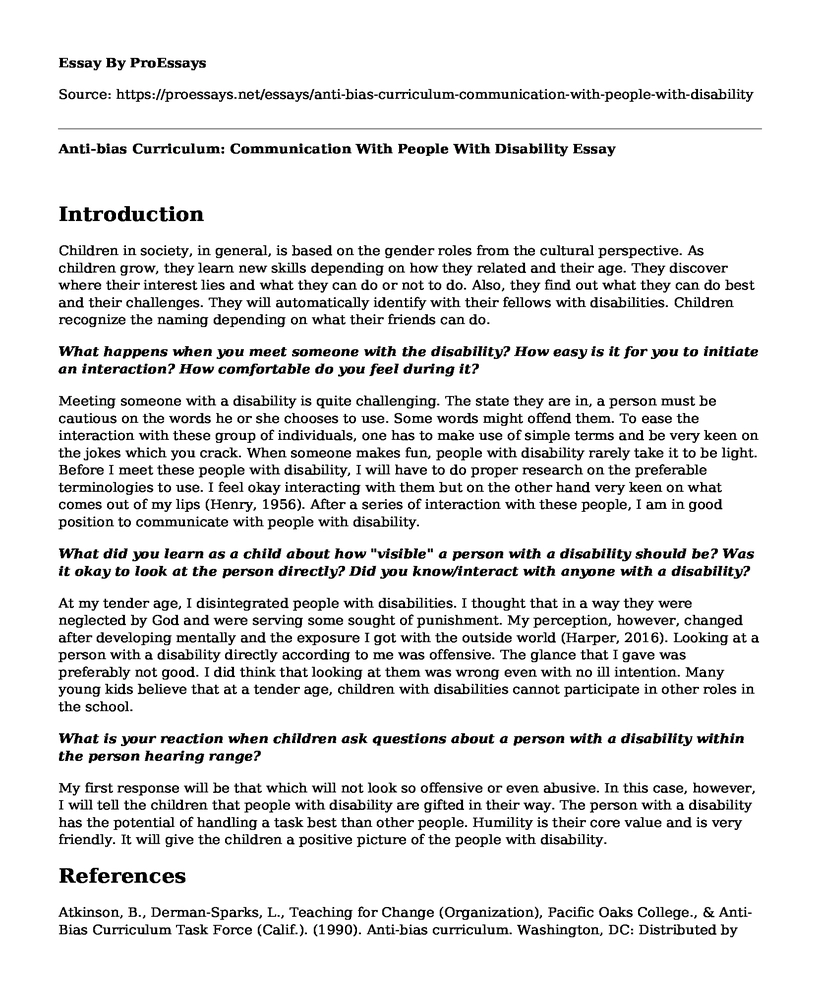Introduction
Children in society, in general, is based on the gender roles from the cultural perspective. As children grow, they learn new skills depending on how they related and their age. They discover where their interest lies and what they can do or not to do. Also, they find out what they can do best and their challenges. They will automatically identify with their fellows with disabilities. Children recognize the naming depending on what their friends can do.
What happens when you meet someone with the disability? How easy is it for you to initiate an interaction? How comfortable do you feel during it?
Meeting someone with a disability is quite challenging. The state they are in, a person must be cautious on the words he or she chooses to use. Some words might offend them. To ease the interaction with these group of individuals, one has to make use of simple terms and be very keen on the jokes which you crack. When someone makes fun, people with disability rarely take it to be light. Before I meet these people with disability, I will have to do proper research on the preferable terminologies to use. I feel okay interacting with them but on the other hand very keen on what comes out of my lips (Henry, 1956). After a series of interaction with these people, I am in good position to communicate with people with disability.
What did you learn as a child about how "visible" a person with a disability should be? Was it okay to look at the person directly? Did you know/interact with anyone with a disability?
At my tender age, I disintegrated people with disabilities. I thought that in a way they were neglected by God and were serving some sought of punishment. My perception, however, changed after developing mentally and the exposure I got with the outside world (Harper, 2016). Looking at a person with a disability directly according to me was offensive. The glance that I gave was preferably not good. I did think that looking at them was wrong even with no ill intention. Many young kids believe that at a tender age, children with disabilities cannot participate in other roles in the school.
What is your reaction when children ask questions about a person with a disability within the person hearing range?
My first response will be that which will not look so offensive or even abusive. In this case, however, I will tell the children that people with disability are gifted in their way. The person with a disability has the potential of handling a task best than other people. Humility is their core value and is very friendly. It will give the children a positive picture of the people with disability.
References
Atkinson, B., Derman-Sparks, L., Teaching for Change (Organization), Pacific Oaks College., & Anti-Bias Curriculum Task Force (Calif.). (1990). Anti-bias curriculum. Washington, DC: Distributed by Teaching for Change
In Butler-Wall, A., In Cosier, K., & In Harper, R. L. S. (2016). Rethinking sexism, gender, and sexuality.
National Society for the Study of Education., & Henry, N. B. (1956). Early childhood education. Chicago, Ill: University Of Chicago Press.
Cite this page
Anti-bias Curriculum: Communication With People With Disability. (2022, Apr 19). Retrieved from https://proessays.net/essays/anti-bias-curriculum-communication-with-people-with-disability
If you are the original author of this essay and no longer wish to have it published on the ProEssays website, please click below to request its removal:
- Essay on Men and Women Equal Rights
- Immigrant Multigenerational Hispanic Families Essay
- Cultivating Healthful Environments in Nursing Essay Example
- Essay Example on Medical University Improves Life Expectancy of Rural Areas
- Research Paper on Global Cancer: A Growing Concern
- US Agencies vs Terror: Challenges & Solutions - Essay Sample
- Free Essay on 100 Years Since Women Gained Right to Vote: Imagining a World Without It







